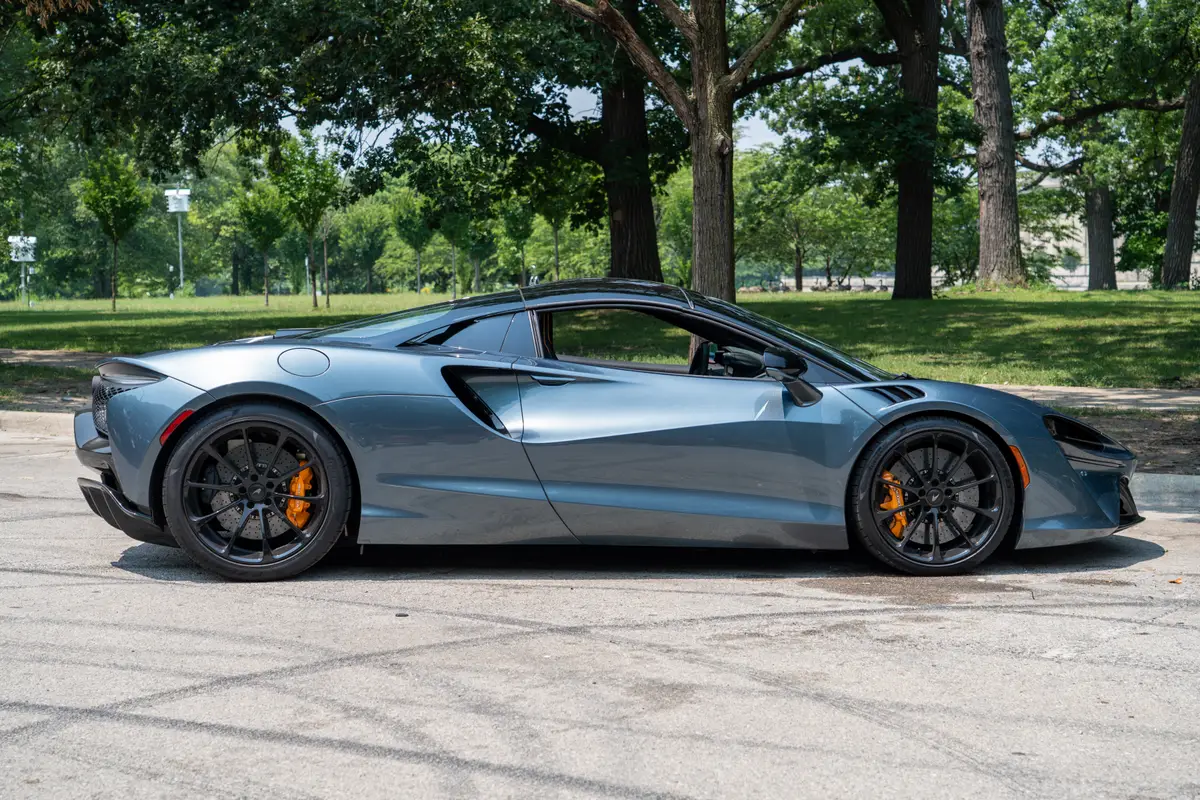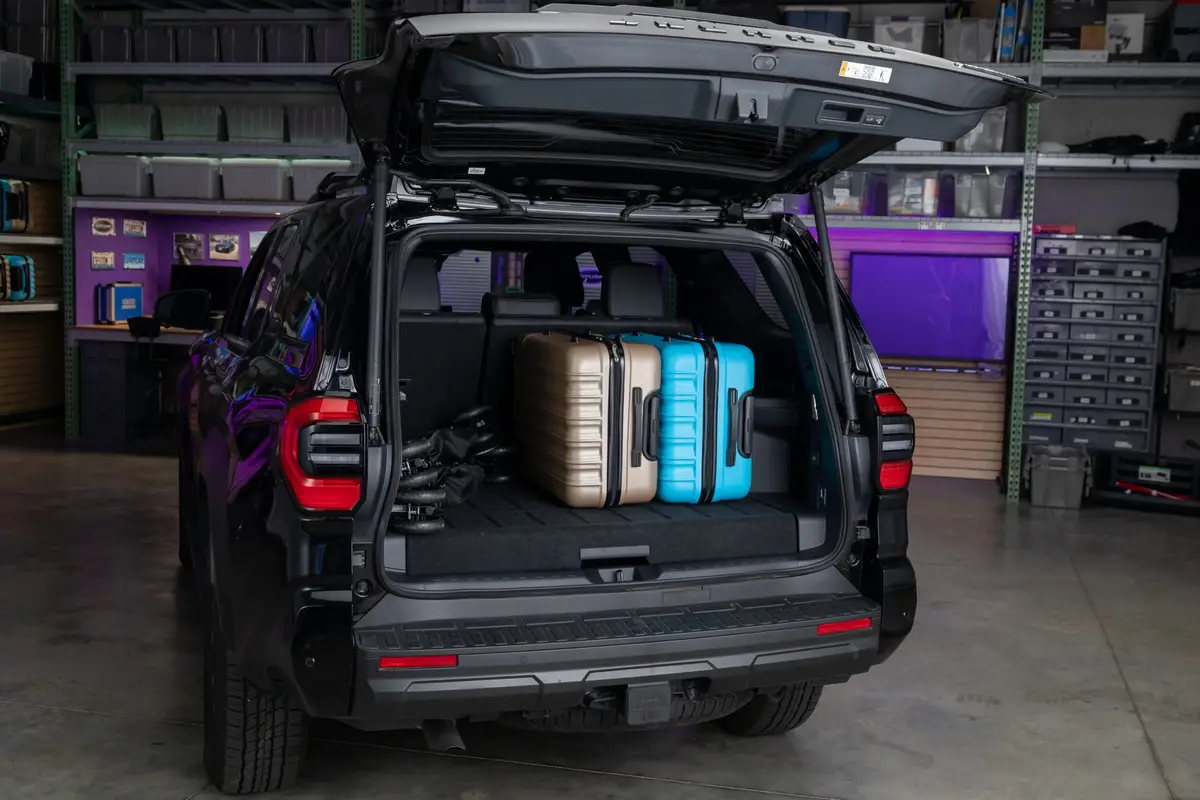Boston.com's view
Toyota, which has done such a fine job of plugging very good cars into seemingly every conceivable niche – economy car, pickup truck, van, SUV (five of them), low-luxury vehicle, Lexus luxury vehicles, and crossover vehicle – has in recent years lacked one key product.
When it came to young buyers of performance cars, Toyota was left at the starting line.
And as those inexpensive performance cars have evolved, a new demand was put upon their manufacturers: make them utilitarian, as well. Give us speed, give us function. Witness the new hatchback Honda Civic Si, the Subaru WRX wagon, the Ford Focus SVT, and you get the idea.
Now, building on the 2003 Corolla platform, Toyota is at last in the race. The new car is called the Matrix, and it is a cheese-wedge of a car that seems part PT Cruiser, part minivan, and part (small part) SUV. With its high-roof wedge shape and swooshing black glass running down the sides and across the rear, it combines utility and a bit of “The Fast and the Furious” image of a street performer.
Toyota calls it a CUV – Crossover Utility Vehicle.
It is offered in three models – base, XR, and XRS. Depending on model, it comes with two engine choices, three transmission options, and either front- or four-wheel drive.
In the base and XR models (as tested, in four-wheel-drive), the engine is the 1.8-liter, 123-horsepower (130 horsepower in front-wheel drive form) inline 4-cylinder that powers the Corolla.
In the XRS, the engine comes from the Celica GT-S, and is a 1.8-liter inline-4, with variable valve timing and lift, that delivers a substantially better 180 horsepower.
The four-wheel-drive system uses a viscous coupler to send torque to the rear wheels. Normally, the car runs in front-wheel-drive. When those wheels slip, as much as 50 percent of the torque can be sent rearward. This is a good thing but not for offroading, because this is in no way an offroad vehicle, but for performance in the wet and slippery, or for just getting around in winter.
The drawback is that you cannot get four-wheel drive with the more powerful engine. Toyota says the viscous coupling can’t take the extra power.
I found that troubling.
Why?
Because, first of all, I am a huge fan of these all-wheel-drive systems that send torque front and rear (and in some cases, wheel to wheel) as needed. I like it for its utility, and I like it for the control it offers when running hard.
The problem is, I found the 1.8-liter, 123-horsepower engine that must go with the 4WD system to be quite weak. Sure, with a good start and just the driver aboard, it had no problem cruising at high commuter speeds in and out of Boston.
But filled with kids out to baseball and softball games, it literally wheezed its way up some steep hills.
Maybe because it’s aimed at young buyers, Toyota assumed its drivers wouldn’t be hauling families. Well, college kids travel in packs (see studies for the new Honda Elem ent), and if young drivers opt for the base or XR models with smaller engines, they’ll be traveling slowly in packs.
The car I tested had a four-speed automatic transmission and it had to wind out pretty good in lower gears given that low rpm torque was essentially absent. I suspect the 5-speed manual, also an option with this engine, would be a better choice. On the other hand, the top-of-the-line XRS, with the bigger engine, has a six-speed manual transmission as an option. By the way, the XRS also comes with a nifty “dress” package of front and rear spoilers, fog lights, and side skirts. You will pay an extra $2,000-$3,000 for the exterior package and the stronger powerplant.
The interior is classic Toyota – simple, functional, rich where it needs to be.
Chrome encircles each of the browed gauges. Backlit red lettering offers nice readouts. A pewter-like frame surrounds the control pod at center dash. Buttons and knobs are big and easy to use
The view from the dr ver’s seat is simply van-like. There is a sense of riding high (you’re not); headroom both front and rear is spacious; the look out over the hood reveals no hood. It slopes away that sharply.
The multiuse interior includes fold-flat, 60/40-split rear seats and a fold-flat front passenger seat to accommodate long objects. A track system in the fold-down flat surface of the rear accommodates, for now, snaps that hold cargo nets, but is also meant as a future site for attachments that will hold bicycles and other gear.
The ride is light, yet stiff. Suspension in the four-wheel-drive models has struts, coil springs, and antiroll bar upfront and, in the rear, a torsion beam, coil springs, and antiroll bar. ABS is standard on all 4WD models and the XRS.
On the road, the steering is quick, but the car feels almost too light. It got buffeted in the wind the way a taller van might get tossed around.
Highway passing with one person aboard was fairly efficient; fully loaded, it was a slog.
I understand the market Toyota is trying to reach with the Matrix; I understand the basis of this car. What I don’t understand is why they put it out in four-wheel-drive mode with this engine. Some folks will be fine with this setup. I’m not sure Toyota’s target audience will. Of course, they could always go front-wheel-drive with the more powerful engine.
In the meantime, Toyota needs to find a way to round up those 180 ponies at the 4WD Corral.
2003 Toyota Matrix XR 4WD
Base price: $18,445
Price as tested: $19,980
Horsepower: 123
Torque: 118 lb.-ft.
Wheelbase: 102.4 inches
Overall length: 171.3 inches
Width: 69.9 inches
Height: 60.6 inches
Curb weight: 2,965 lbs.
Seating: 5 passengers
Fuel economy: 28.8 miles per gallon
SOURCE: Toyota Motor Sales, USA; fuel economy from Globe testing.
Nice touch Bins, bins, bins. Bin there, done that.
Annoyance The flat, soft front seats. If you want to say performance, you’ve got to at least masquerade as bolstered seats.
Latest news

The McLaren Artura Is Not Like the Others: Review


